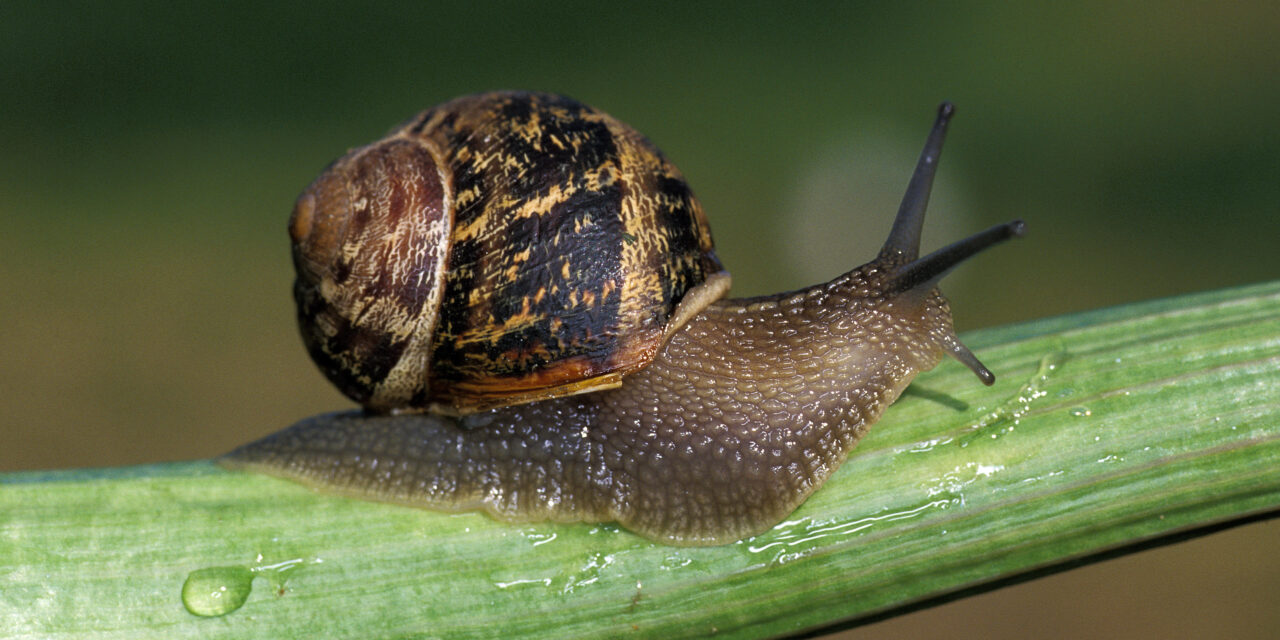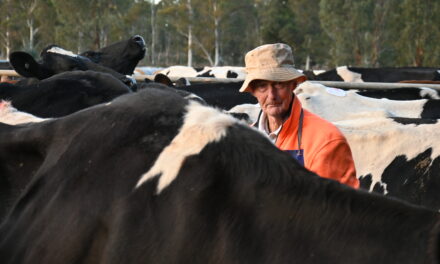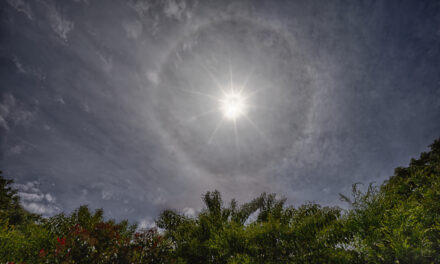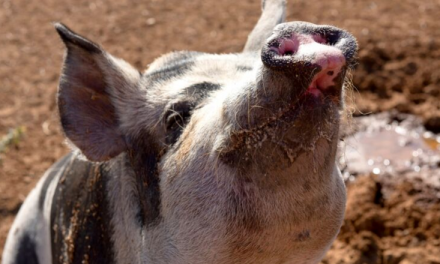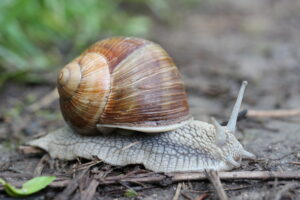
Meet the couple who gave up life on the road marketing jewellery to set themselves up as small farmers with some of the smallest livestock in the known world, writes ANDREW MOLE.
There’s life in the slow lane.
Then there’s snails — plus Doug and Vincenza Alexander.
The couple wanted to get out of their life in the fast lane, driving their magnetic jewellery business from one end of the state (and beyond) to the other (and beyond).
So it was a marriage made in greenhouse heaven — the Alexanders, the Helix Aspersa and the Café Escargot.
From their eight acres in Mirboo North the couple gave a lot of thought to what they should do next and this was it.
But just in case it has been bothering you, there is now a solid body of science agreeing the Helix Aspersa, as it has been known for at least the past two centuries, truly belongs to the genus Cornu.
In plain English, Helix Aspersa is your ordinary garden snail — just not an Australian native garden snail.
Instead it is native to the Mediterranean region, stretching from north-west Africa and Iberia east to Asia Minor and Egypt — and now Australia.
These are also better known by the hoi polloi as escargot — French for snails you eat.
The Alexanders have been working with Helix Aspersa for the past 16 years, and Doug says the snails have proved to be a very good pace for the family business since they acquired their first breeding stock and brought in a snail farming consultant to help them set up and go through all the steps necessary.
He says like any other livestock, snails need to be carefully managed and although their isolated world in the greenhouse pens protects them from disease and pests the trick is still breeding an animal for a year-round supply and of a consistent quality — and size.
The French, who like to presume a dominant position in the world of escargot enterprise, have nicknamed Helix Aspersa the ‘gros gris’ or the big grey and Doug agrees when it comes to escargot entrées, big is better.
“The prime snail weighs 50g and is 3cm in diameter,” Doug said.
“Any smaller, and they’re out. Any bigger and it is a bonus for the customer.”
“So you work on the theory that big breeds big and that’s the best way to manage the herd,” he said.
Snails are hermaphrodites, producing both male and female gametes. Reproduction is predominantly, and probably exclusively, by outcrossing.
During a mating session going anywhere from four to 14 hours, during which time two snails exchange sperm reciprocally.
“When we have bus tours visit the farm that always gets a laugh from the ladies, who are busy digging their husbands in the ribs, so I explain to them the snails don’t have jobs, mortgages, families, peak hour traffic and all the rest, so what else are they going to do with their time,” Doug said.
“That tends to quieten them down.
“After mating that’s it, they head off in opposite directions and the romance is forgotten — and this can be done two to three times in season, which spreads through spring and summer, tapering through autumn and is dormant in winter.”
Doug says after 20-21 days the snail digs a 2cm hole and deposits anywhere between 20 and 120 eggs, fills the hole in and heads off.
That’s the end of the parenting as well.
“After another three weeks the baby snails emerge and are 2-3mm with a soft shell, more of a membrane really,” Doug said.
“From there maturity is five to eight months away to make our target size of 50g.”
While in the snail feedlot to fast-track weight gain (Fast? Strange word to use with a snail story) they are fed on leafy greens and Doug’s secret blend of herbs and spices as a powder.
Once the snails are ready for the plate, they spend a week in the purging box, fed only roughage to clear their digestive tract and they are then quick boiled, like crustaceans, and either put into glass jars of brine or frozen.
“We normally serve them in the restaurant as plates of six, but we do have our Uno grande piatto di escargot, which is 30 snails in a Mediterranean sauce (or hot chilli if you prefer) and served with crusty bread for $38,” Doug said.

Other selections on the menu include:
- Escargot garlic — escargot in garlic butter — $15;
- Crispy salt and pepper escargot — with aioli for dipping — $15;
- Australian bush herbs escargot — crispy escargot seasoned with lemon myrtle and mountain pepper leaf, with chutney for dipping — $15;
- Hot chilli escargot — let us know how you like it, mild or hot — $15;
- Escargot a la crème — creamy fresh herb sauce served on ricotta gnocchi — $20; and
- Escargot Mediterranean — oven-roasted tomatoes and capsicum served on ricotta gnocchi — $20.
Doug says the snails sell through their restaurant (bookings by appointment only), which also doubles as a function venue and handles weddings, parties or any other gathering for up to 80 people.
Or you can come and pick up some for a dinner party at home, or just because you like them.
“Snails are flavour translators, on their own they could even be described as a little bland, but put them with something such as garlic butter, chilli or Mediterranean sauce, or our special salt and pepper blend, and the flavours can light up your mouth,” Doug said.
But as good as they can be on the plate, the Helix Aspersa’s spread around the world hasn’t exactly been welcomed in many places.
The snail is relished as a food item in some areas, but it is also widely regarded as a pest in gardens and in agriculture, especially in regions where it has been introduced accidentally, and where snails are not usually considered to be a menu item.
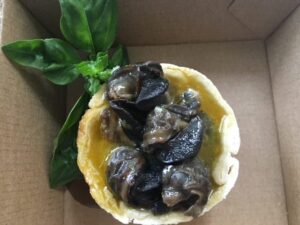
For example, it was introduced to southern Africa as a food animal by Huguenots in the 18th century, and California as a food animal in the 1850s and is now a notorious agricultural pest in both regions, especially in citrus groves and vineyards.
Doug says there is just one other, small, teensy weensy difference between the escargot a la Mirboo North and the escargot a la Maxims de Paris.
He says his are served sans shell.
“Because for some reason, Aussies just can’t seem to handle eating snails from a shell.”
Crabs yes, crays, absolutely, oysters are okay, and mussels pass muster.
But the snail Down Under is a delicacy served naked.

